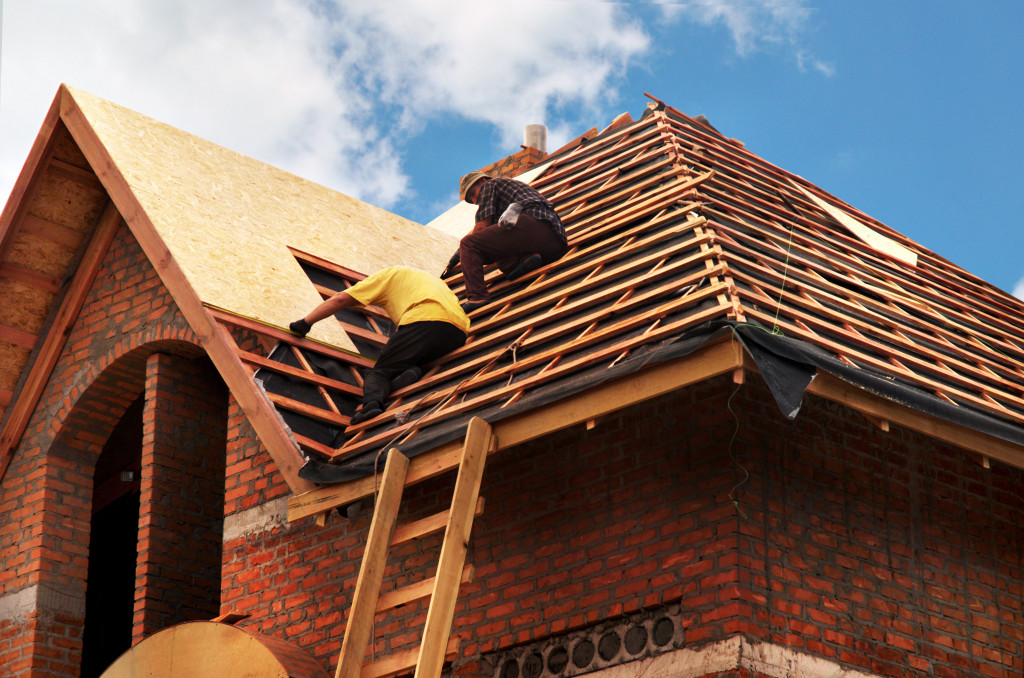- Clear away debris to prevent further damage.
- Secure loose items around the home to avoid worsening existing damage.
- Patch any leaks or cracks in the roof or siding.
- Check the condition of gutters and downspouts.
- Call a professional for extraction services if necessary.
After a storm, your home can be left with extensive exterior damage. You must mitigate the damage from roof damage to landscaping and siding as quickly as possible to reduce any further harm. This article will explain how to assess the damage and what steps you need to take to repair or replace your home’s exterior components after a storm.
Clear Away Debris to Prevent Further Damage
The first step in assessing the damage after a storm is to clear away any debris that may have been left behind. This can include branches, leaves, and other items that may have blown onto your property during the storm. Clearing away these items will help you get an accurate assessment of the extent of the damage and will also reduce the risk of further damage occurring as a result of these objects on your property.
Secure Loose Items to Avoid Worsening Existing Damage
Once you’ve cleared debris, it’s essential to check for any loose items around your home, such as shutters or siding panels. If these items are loose, they will need to be secured to avoid any further damage resulting from them moving around during high winds or other weather conditions. It’s important to check all exterior walls, doors, and windows for loose items and make sure they are properly secured before continuing with the assessment.
Patch Any Leaks or Cracks in Your Roof or Siding

If you notice any leaks or cracks in your roof or siding, then you must take steps to patch these up as soon as possible. This is because even minor leaks can cause significant damage over time if left untreated. If you’re not confident about patching these, then it’s best to call a professional, so they can do the job correctly.
Check the Condition of Gutters and Downspouts
It’s also important to check the condition of your gutters and downspouts after a storm. Clogged or damaged gutters can cause water to back up, leading to further damage and an increase in pest infestations such as mosquitoes or other insects. If you notice any issues with your gutters or downspouts, then it’s best to call a professional for repairs.
Call a Professional for Extraction
Finally, if your home has been flooded as a result of the storm, then it’s important to call a professional specializing in water extraction services. This is because standing water can cause significant damage over time and can also be a health hazard if not removed quickly. A professional can use special equipment to extract the water from your home and ensure that the flood causes no further damage.
Commonly Asked Questions
What are the most common types of exterior home damage caused by storms?

The most common types of exterior home damage caused by storms include flooding, broken windows, falling trees and branches, damaged roofs, and destruction from hail or high winds.
How often should I check for external damage to my home?
Ideally, you should inspect your home at least twice a year — preferably during spring and autumn when extreme weather conditions are less likely. However, if there is an upcoming storm predicted in your area, it is best to do a quick check of the exterior of your home.
What can I do to protect my home from future storms?
You can take preventive measures such as installing storm shutters, reinforcing windows and doors with impact-resistant materials, and trimming trees in the vicinity of your house. You should also ensure that your roof is in good condition by having it inspected by a professional at least once every two years.
Does my homeowner’s insurance cover storm damage?
It depends on the type of coverage you have. Most standard plans include “named peril” protection for hail, wind, and fire damage. However, some policies may not include certain types of damage, such as flooding. It is best to check with your insurer to make sure that you’re adequately covered in case of a storm.
In Summary
Mitigating the damage after a storm is essential to reduce further harm to your home. By following these steps, you can ensure that your home’s exterior is secure and free from additional damage. Be sure to clear away debris, secure loose items, patch leaks or cracks, check gutters and downspouts, and call a professional for extraction services if necessary. These steps will help ensure your home remains safe and sound after a storm.
